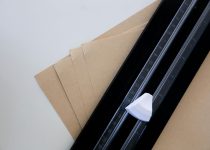How to Make Patio Pavers Look Wet
Are you tired of your patio pavers looking dull and lifeless? Do you want to achieve that desirable wet look? Look no further!
In this article, we will guide you through the process of making your patio pavers look wet. We’ll show you how to choose the right sealer, prepare the pavers, and apply the sealer effectively.
Plus, we’ll share tips and tricks for maintaining that wet look for a long-lasting effect.
Get ready to transform your patio into a stunning oasis!
Table of Contents
Key Takeaways
- Choosing the right sealer is crucial for achieving a wet look on patio pavers.
- Proper preparation of the pavers, including cleaning and drying, is essential before applying the sealer.
- Applying the sealer evenly and in the recommended amount will prevent a cloudy or sticky finish.
- Regular maintenance and resealing are necessary to maintain the wet look and protect the pavers from stains and weathering.
Choosing the Right Sealer
To achieve the desired effect, you should choose the right sealer for your patio pavers. There are various sealer options available in the market that can help you achieve the wet look for your pavers.
One popular option is the solvent-based sealer, which penetrates the pavers and enhances their color, making them appear wet.
Another option is the water-based sealer, which forms a protective layer on the surface of the pavers and gives them a glossy finish.
When applying the sealer, make sure to follow the recommended application techniques. Clean the pavers thoroughly and allow them to dry before applying the sealer.
Use a sprayer or roller to evenly apply the sealer, making sure to cover all the surfaces.
Allow the sealer to dry completely before using the patio.
Preparing the Pavers
Start by spraying water on your clean pavers to give them a fresh and glossy appearance. Cleaning the pavers before sealing is an essential step to ensure a smooth and long-lasting finish. Here are four sealing techniques to consider:
- Sweep the pavers thoroughly to remove any loose dirt or debris.
- Use a mild detergent mixed with water to scrub away stubborn stains.
- Rinse the pavers with a hose to remove any remaining detergent and dirt.
- Allow the pavers to dry completely before applying the sealer.
By following these steps, you will create a clean surface for the sealer to adhere to, resulting in a professional-looking finish.
Remember to choose the right sealer for your pavers to enhance their color and protect them from stains and weather damage.
Applying the Sealer
After the pavers have dried completely, it’s time to apply the sealer for a protective finish.
To begin, make sure the weather conditions are ideal for sealing, with no rain in the forecast for at least 24 hours.
Start by pouring the sealer into a paint tray, then dip a paint roller into the sealer and evenly apply it to the pavers. Be careful not to apply too much sealer, as this can cause a cloudy or sticky finish.
Allow the sealer to dry for the recommended time, usually around 24 hours, before walking or placing any furniture on the pavers. During this drying time, ensure that the area remains clean and free of any foot traffic.
Once the sealer is fully dry, your patio pavers will have a beautiful wet look and be protected from the elements.
Enhancing the Wet Look
Once the sealer has dried completely, you’ll notice a glossy appearance that enhances the overall aesthetic of your patio. Achieving this glossy finish is important to create the desired wet look effect.
Here are four key points to keep in mind:
-
Choose a high-quality wet look sealer: Opt for a sealer specifically designed to enhance the wet look. These sealers contain additives that give your patio pavers a glossy finish.
-
Apply multiple coats: To achieve a deep and long-lasting wet look, it is recommended to apply multiple coats of sealer. Each coat adds to the overall shine and protection of your patio.
-
Regular maintenance: Over time, the wet look may fade due to exposure to sunlight and foot traffic. To maintain the glossy appearance, periodic resealing is necessary.
-
Consider long term effects: Wet look sealers not only enhance the appearance but also provide protection against stains and weathering. Investing in a quality sealer ensures the longevity of your patio pavers.
Maintaining the Wet Look
To keep the glossy appearance of your patio intact, it’s important to regularly reseal the surface. Sealing techniques play a vital role in maintaining the wet look of your patio pavers.
There are various options available, both traditional and natural alternatives, to achieve this. Traditional methods involve using sealants specifically designed for outdoor use. These sealants create a protective barrier, preventing moisture and dirt from penetrating the surface.
Natural alternatives, on the other hand, can be just as effective. For example, linseed oil is a popular choice for sealing outdoor surfaces. It not only enhances the wet look but also provides additional protection against weathering.
Whichever method you choose, remember to follow the manufacturer’s instructions and apply the sealant regularly to keep your patio looking glossy and fresh.
Tips and Tricks for a Lasting Effect
For a long-lasting effect, it’s essential to regularly apply sealant and follow the manufacturer’s instructions. Here are some tips and tricks to help you maintain the wet look of your patio pavers and prevent fading:
-
Clean regularly: Remove dirt and debris from your pavers by sweeping or using a pressure washer. This will prevent the buildup of grime that can dull the appearance of your pavers.
-
Apply sealant: Use a high-quality sealant specifically designed for pavers. Apply a fresh coat every 1-2 years to protect against fading and UV damage.
-
Avoid harsh chemicals: Certain cleaners and chemicals can strip away the protective sealant and cause fading. Stick to mild, pH-neutral cleaners for regular maintenance.
-
Limit direct sunlight: If possible, provide shade or use patio umbrellas to reduce the amount of direct sunlight your pavers receive. This will help prevent fading over time.
Frequently Asked Questions About Wet Look Pavers
One common question about paver maintenance is whether harsh chemicals can cause fading. Using harsh chemicals can indeed cause fading and damage to your pavers. It is recommended to use a gentle cleaner specifically designed for pavers to avoid any potential harm.
When it comes to sealing techniques for wet look pavers, it is important to choose the right products and avoid common mistakes. Additionally, it is crucial to follow the manufacturer’s instructions regarding the application and maintenance of the sealant.
Common mistakes to avoid include over-applying the sealant, not cleaning the pavers thoroughly before sealing, and not allowing enough time for the sealant to dry properly.
Frequently Asked Questions
Can I Use Any Type of Sealer for Patio Pavers?
You can use different types of sealers for patio pavers. When choosing one, consider factors like durability, weather resistance, and the desired finish. It’s important to select a sealer that meets your specific needs.
How Long Does It Take for the Sealer to Dry?
To speed up sealer drying time, keep the area well-ventilated and use fans. To tell if the sealer is dry, touch a small, inconspicuous area and see if it feels tacky.
Can I Apply the Sealer in Hot Weather?
You can apply the sealer in hot weather, but it is best to avoid extreme temperatures. Applying sealer in cold weather can affect the drying time and overall effectiveness of the product.
Can I Apply the Sealer on Pavers That Have Already Been Sealed?
Yes, you can apply sealer on pavers that have already been sealed. Reapplying the sealer not only enhances the durability and longevity of the pavers but also brings out the aesthetic benefits of the wet look.
Can I Use a Pressure Washer to Clean the Pavers Before Applying the Sealer?
Yes, you can use a pressure washer to clean the pavers before applying the sealer. It is an effective method that can remove dirt and grime. However, if you prefer alternatives, there are other cleaning methods available.



